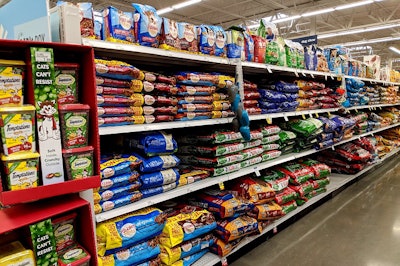
“There’s a great future in plastics.” That classic line from the 1967 movie “The Graduate” seems to have come true for pet food packaging today – but its lack of sustainability could eventually pose a problem.
Plastic bags are used nearly as much as paper for dry pet food and will likely overtake paper by 2023, according to a 2018 Packaged Facts report. They have become popular (also for pet treats) due to their ability to protect the product, keep it fresh, include convenient features like zip-top closures and allow for attractive images and graphics.
The sustainability factor cannot be ignored, however. Packaged Facts’ consumer surveys show that 30% of U.S. pet owners try to avoid pet foods with excess packaging. In the overall U.S. population, 58% of consumers said they have a more positive view of brands using no plastic or limited amounts in their packaging, said Suzanne Shelton, president and CEO of the Shelton Group, which conducted a consumer poll on single-use plastics in March 2019.
Pet food packaging suppliers are researching ways to make their offerings more sustainable, but at this point, truly sustainable packaging would sacrifice important features like product protection or oxidation barriers while also being prohibitively expensive, according to companies like TC Transcontinental.
Recycling isn’t necessarily a panacea; it’s usually a one-way process, access to it is limited in some areas and not all consumers comply anyway. Less than 9% of all plastics ever made have been recycled, while only 18% of U.S. pet owners consider the use of recycled, recyclable or biodegradable materials in pet food packaging important at this point, Packaged Facts said.
Yet recycling is what we have now, and some pet food companies are encouraging it or undertaking other initiatives to reduce single-use plastics. Brands such as Wellness and Royal Canin are partnering with TerraCycle to encourage customers to drop off or send in empty pet food bags, while Annamaet uses biodegradable bags, Only Natural Pet uses bags made partially with bioplastics and Nestle Purina launched a packaging research institute. These are only a few of the pet food players seeking to be more sustainable.


















